This is the ultimate recipe for all you cheese lovers! A simple and beloved traditional Greek Saganaki recipe, made with only three ingredients and ready in less than 10 minutes! What I love the most about Saganaki is its delicious golden crust and how its so irresistibly gooey on the inside. Simply delicious!
In this recipe I will take you through, what is saganaki, how to pick the right cheese for it, how to prepare it, whether you should flambe it or not, how to serve it and, most of all, show you with my step by step video!
What is saganaki?
‘Saganaki’ refers to various Greek appetizers, which are prepared in a small, two handled heavy bottomed frying pan, itself called a saganaki or sagani. The most common traditional Greek recipes cooked in that kind of pan include feta saganaki, mussels saganaki, shrimp saganaki, with the most popular being this simple and delicious cheese saganaki recipe. It is most commonly served as a delicious starter to go along with a traditional Greek Moussaka!
What is the right kind of cheese to make your Saganaki recipe?
When preparing your Greek saganaki recipe it’s particularly important to pick the right kind of cheese.
The cheeses which are used in Greece to make traditional Greek saganaki are graviera, kefalograviera and kefalotyri. They are all medium hardness yellow cheeses with a mild nutty flavour. If you can find one of these at your local deli, go for it! You will also find regional variations which may use Cypriot halloumi or mastello from the island of Chios.
If you can’t find the above traditional Greek cheeses, just remember that it is particularly important for the cheese to be firm enough to hold-up well against the heat and not fully melt while being fried. It also needs to be soft enough for the inside to become nicely gooey and stringy. Based on my experience, ideal alternative cheeses for saganaki are thick slices of Monterey Jack, provolone and young Pecorino.
How to make your Greek cheese Saganaki the traditional way
Flour, olive oil and cheese is all you need to make this mouthwatering appetizer at home. In many other recipes and restaurants the Saganaki is deep fried in plenty of oil, but personally I find it is simply not necessary. What we are looking for is a nice thin crispy crust and a soft and melty interior.
If you choose to deep fry the Saganaki, the crust will become thicker than it needs to be and the taste from the oil will end up being overwhelming. So shallow frying the cheese in olive oil is the way to go!
To prepare your saganaki, you need to follow three very simple steps:
- Cover the surface of the cheese with cold water. Dip it in a bowl of water or place under running water.
- Dredge the cheese in flour shaking of any excess
- Pan fry (shallow fry) with olive oil in a pan warmed up to medium heat. Don’t forget to flip it over to become golden on both sides.
- Tip: Serve the Saganaki right away, as it will become hard when it gets cold.
Should you flambé your cheese Saganaki?
I have been receiving a lot of comments from my readers about whether Saganaki is supposed to be flambéd or not. Well, the answer is it’s a mater of personal taste!
Traditionally in Greece, Saganaki is not commonly served flambé, except from some restaurants in tourist hotspots. However, flaming Saganaki is a Greek American tradition, which begun in Chicago’s Greektown. And I must admit it’s a really enjoyable sight!
So if you choose to flambé the Saganaki, just pour a bit of metaxa (Greek brandy) or ouzo, ignite with a lighter and squeeze a wedge of lemon over the cheese. OPA!
How to Serve Saganaki
Greek cheese Saganaki is best served hot while still melty on the inside. Other appetizers that you can serve alongside it are:
- Greek Tzatziki (Yogurt, cucumber and garlic dip)
- Keftedes (Greek meatballs)
- Spanakopitakia (Spinach triangles with phyllo)
- Dolmades (Stuffed grape leaves)
- Spetsofai (Spicy greek sausages with peppers)
- Kolokithokeftedes (Greek zuchini fritters)
- Feta Saganaki (pan fried feta cheese)
And of course a Greek salad or a green salad to cut out the richness. Enjoy this delicious traditional Greek meze with a last minute squeeze of a lemon and with large chunks of crusted bread! Oh and you can always read this in Greek if you fancy Συνταγή για τυρί Σαγανάκι.

Saganaki recipe (Pan-seared Greek cheese appetizer)
- Prep Time: 5 minutes
- Cook Time: 10 minutes
- Total Time: 15 minutes
- Yield: 1 piece 1x
- Category: appetizer
- Method: Fried
- Cuisine: Greek
Description
Looking for an authentic Saganaki recipe? Try out this super easy Greek Saganaki cheese recipe, made with only three ingredients and ready in less than 10′!
Ingredients
- 110g cheese (Graviera). Alternatively you can use kefalograviera, kasseri, kefalotyri. Monterey Jack, provolone or young Pecorino are also great alternatives if you can’t find a Greek cheese.
- 50g plain flour, for dredging (1–2 ounces)
- oil for frying
- 1/2 lemon
Instructions
- To prepare this saganaki recipe, slice a large block of cheese (or some smaller if you prefer), approx. 10*7cm and 1,5 cm thick. If you cut the cheese thinner, the saganaki will melt into the pan.
- Place the cheese under running water and then dredge into the flour, shaking off the excess flour. This will help the saganaki form a nice golden crust and to hold its shape when fried.
- Into a small heavy-bottomed pan add some oil. As soon as the oil heats, add the cheese and fry for a few minutes on both sides, flipping the saganaki carefully with a spatula, until nicely colored.
- Prepare this delicious Greek cheese saganaki recipe and serve, while still smoking hot as a delicious meze with a last minute squeeze of a lemon. Enjoy!
Nutrition
- Serving Size: 2 people
- Calories: 379kcal
- Sugar: 0.6g
- Sodium: 933.3mg
- Fat: 22.3g
- Saturated Fat: 10.6g
- Unsaturated Fat: 11g
- Trans Fat: 0g
- Carbohydrates: 21g
- Fiber: 0.7g
- Protein: 23.4g
- Cholesterol: 39.6mg
Keywords: greek fried cheese, saganaki cheese, how to make saganaki, kefalograviera saganaki, pan fried greek cheese
Recipe image gallery:




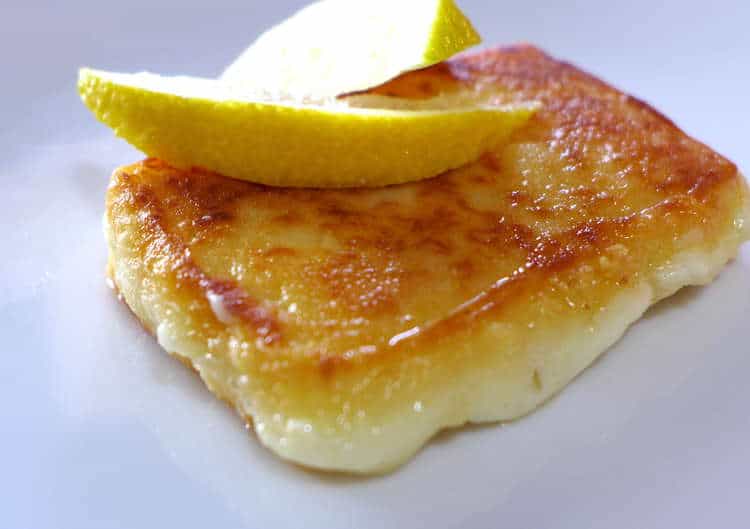
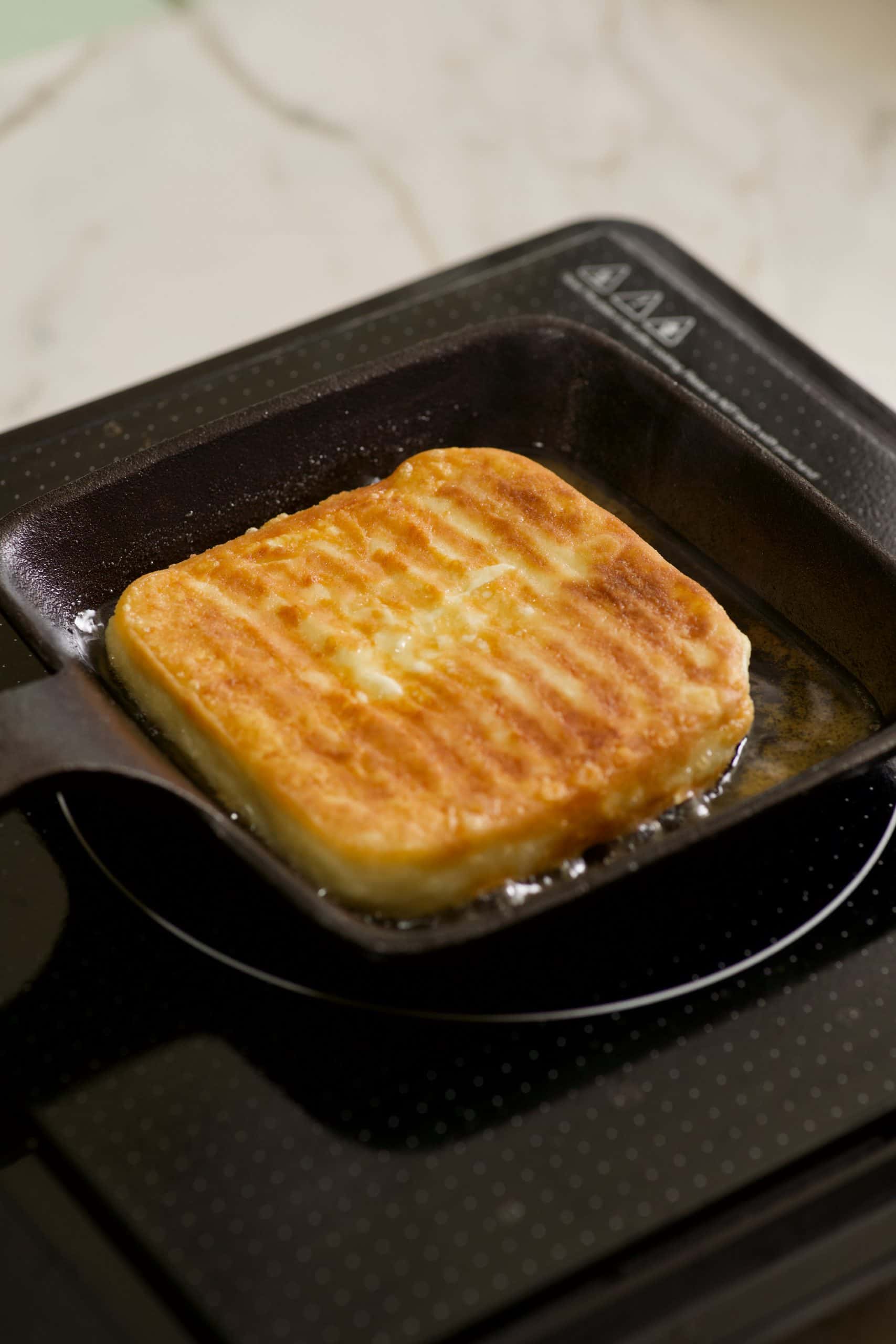
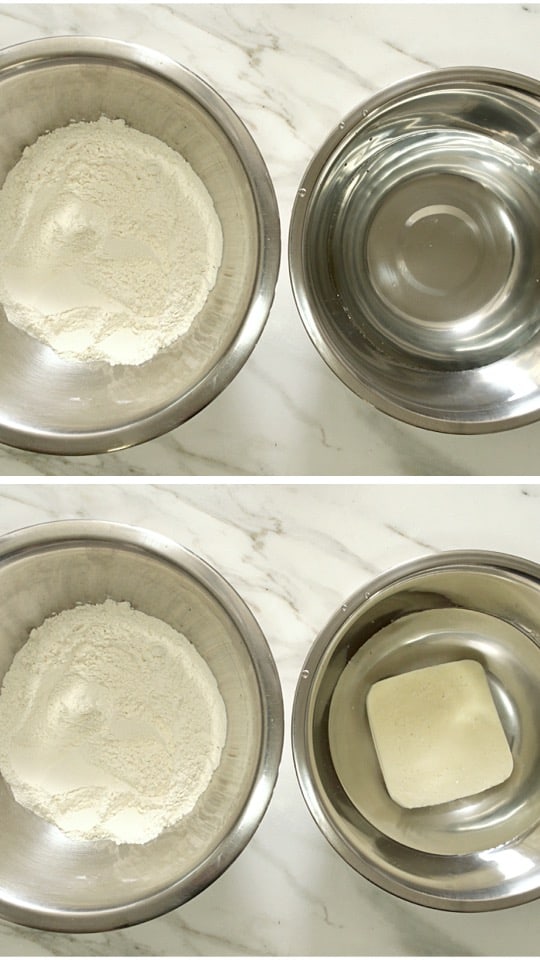
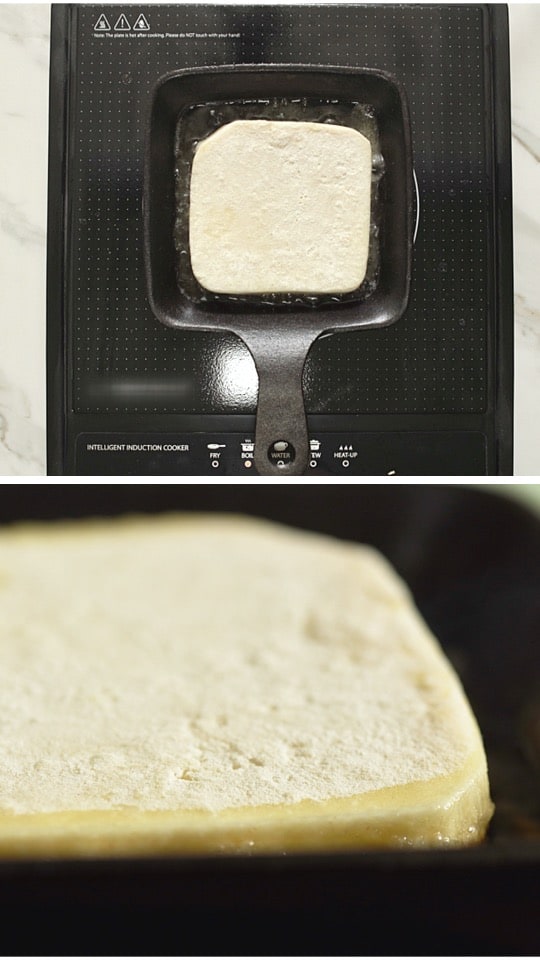
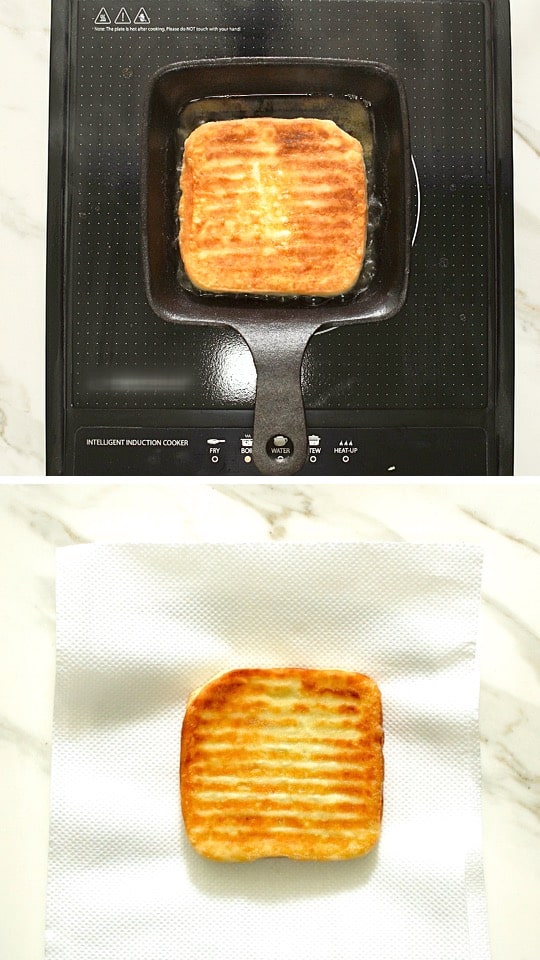
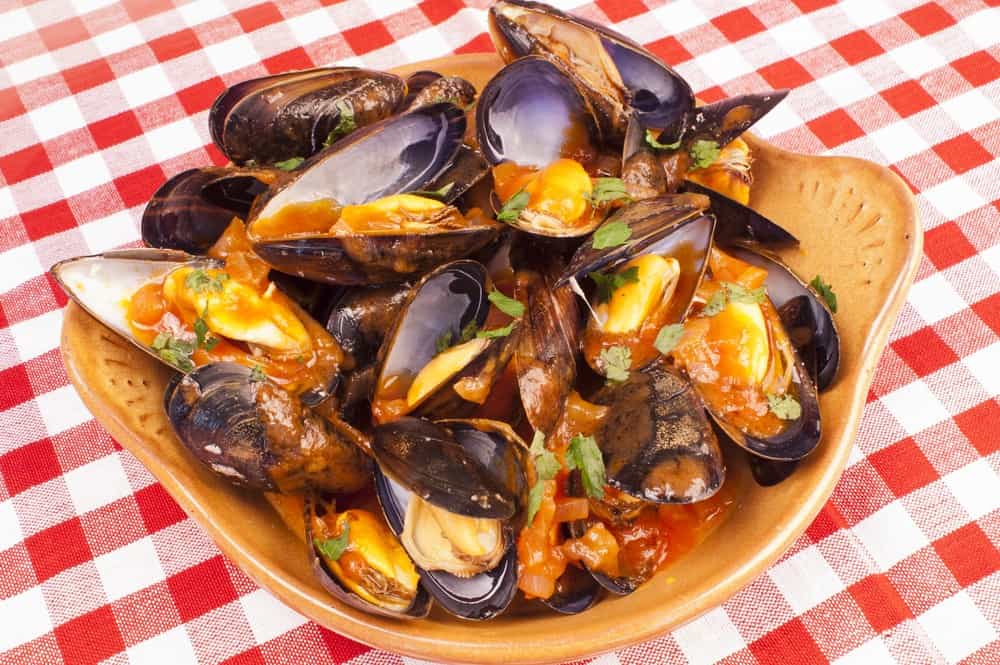




Simply the best!
I’ve always had it flamed with ouzo at table side…
what kind of oil?
I fell in love with this in Crete – and now I know which cheese they used. Read and weep waistline!
I recently had this at a Greek restaurant that Gordon Ramsey just made over. It was flambe’d table
side with ouzo poured on top and put out with a squeeze of lemon. It was amazing!
I’m with those who suggest it be flambed with Ouzo or even brandy. I think it adds an important taste profile.
Anything with melting cheese is delish but my first thought was, “Hey, where’s the fire?”
I have eaten this often in Crete, over the years, and enjoyed it most with a drizzle of honey – Yum!
Question, how do you think this would work in an air fryer? With people trying to eat healthier, many are using their air fryers to cut some calories. The cheese itself is packed with protein, so it’s a great food.
Hi Maggie
I’ve never tried an air fryer so can’t comment for sure, but I would think that the paddle in the bottom may mush up the cheese? If your air fryer can work without the paddle it should work nicely!
Tried this. It tastes better if you just fry it the normal way without flour.
do u guys know what fried saganaki is
It is delicous
In restaurants here on Crete they often use Dutch Gouda cheese for the Saganaki…..☺️
Made this last night. Couldn’t find the greek cheeses, so I used the recommended Monterrey Jack.
It was amazing!!
Great recipe for sure.
What is the #1 Greek cheese used in Greece for this recipe?
very good
https://transporterzy.pl/